BACK TO RESEARCH WITH IMPACT: FNR HIGHLIGHTS
The hydrological cycle – the continuous circulation of water in the Earth-Atmosphere system – is vulnerable to climate change, which is expected to lead to substantial changes in the magnitude and frequency of extreme events such as droughts and floods. Current tools to predict how for example rivers respond to climate change are largely unreliable. To change this, researchers are working on the first ever quantitative reconstruction of the history of flowing waters – using the shells of freshwater pearl mussels.

The devastating floods in Central Europe in July 2021, or more recently in Pakistan in September 2022, are among the costliest natural catastrophes in modern history. However, the detection and mechanistic interpretation of climate signals in flood records – also referred to as “the changing pulse of rivers” remain difficult. This is for example due short, incomplete, or low-quality discharge datasets. This limitation is a significant barrier in the design and implementation of precautionary measures against once in a lifetime flood and drought events.
An interdisciplinary effort
There is huge potential in the integration of various disciplines from life sciences, such as ecology, sclerochronology, dendrochronology), geosciences (hydrology & hydraulics, geochemistry) and material sciences (nano probing) and research has been able to put this synergy to use: This interdisciplinary approach helps pave the way for reconstructing watershed functioning and related extremes from various natural archives, such as tree rings, freshwater bivalves, and diatoms.


“With respect to water resource management practice, we expect these synergetic approaches to strongly advance the assessment of discharge extremes, related changes in water storage dynamics, including sediment and geochemical tracer fluxes,” explain researchers Guilhem Türk and Loic Léonard who work in the Catchment & Eco-hydrology group (CAT) at the Luxembourg Institute of Science & Technology (LIST), led by Richard Keim.
Current standard approaches over-simplified and outdated
The wide-spread use of site-specific empirical relations connecting river shapes to the likelihood of extreme water flow is overly simplified and outdated, explain the researchers. Not only does this approach assume that river functions are the same in all geologies, but also that rivers and landscapes stay almost the same over time, and researchers know that’s not true.
This leaves researchers without the right tools to fully understand this and make accurate predictions about how rivers will react to climate change.
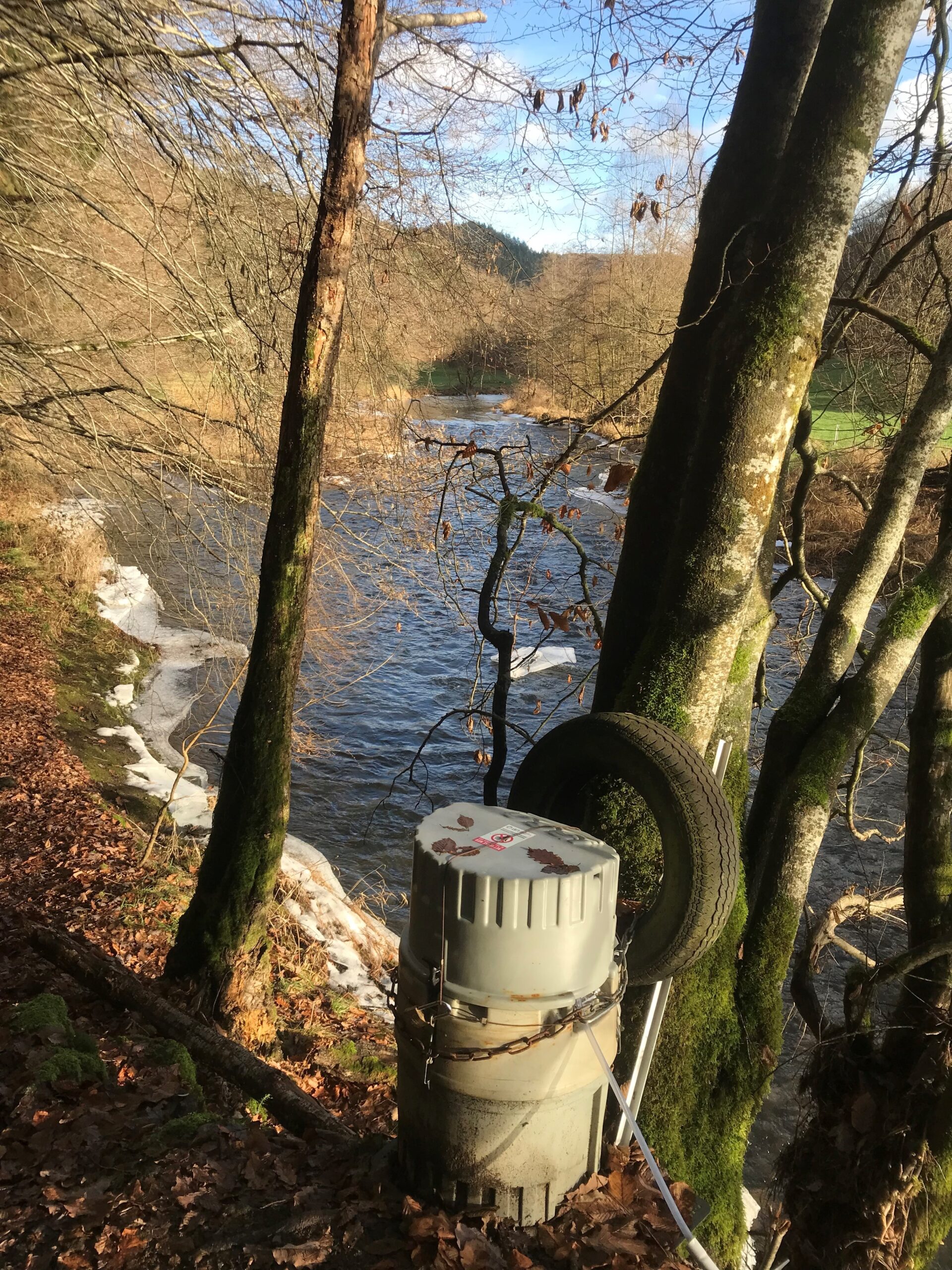
The team’s set up
“With precipitation and discharge data series rarely exceeding 100 to 150 years, if complete, and observations of hydrological tracers, such as isotopes of O and H spanning two decades at best, the scale of these chronologies is largely incompatible with those of watershed co-evolution or long-term persistence properties, such as extreme event clustering. ”Guilhem Türk & Loic Léonard Luxembourg Institute of Science & Technology
6 years of high frequency samples
Together with Prof. Laurent Pfister (Guilhem Türk’s PhD thesis supervisor), François Barnich (engineer in LIST’s isotope hydrology laboratory), Guilhem Türk (PhD researcher) and Loic Leonard (technician, laboratory analyst) collected and analysed 6 years of sub-daily precipitation O-H isotope samples, leveraging the unique dataset for modelling isotopic signatures in precipitation back into pre-instrumental times based on recordings of local meteorological conditions.
“Through a unique combination of reconstructed time series of O-H stable isotopes in precipitation and stream water, we are attempting the first ever quantitative reconstruction of the history of flowing waters,” Hydrologist Guilhem explains.
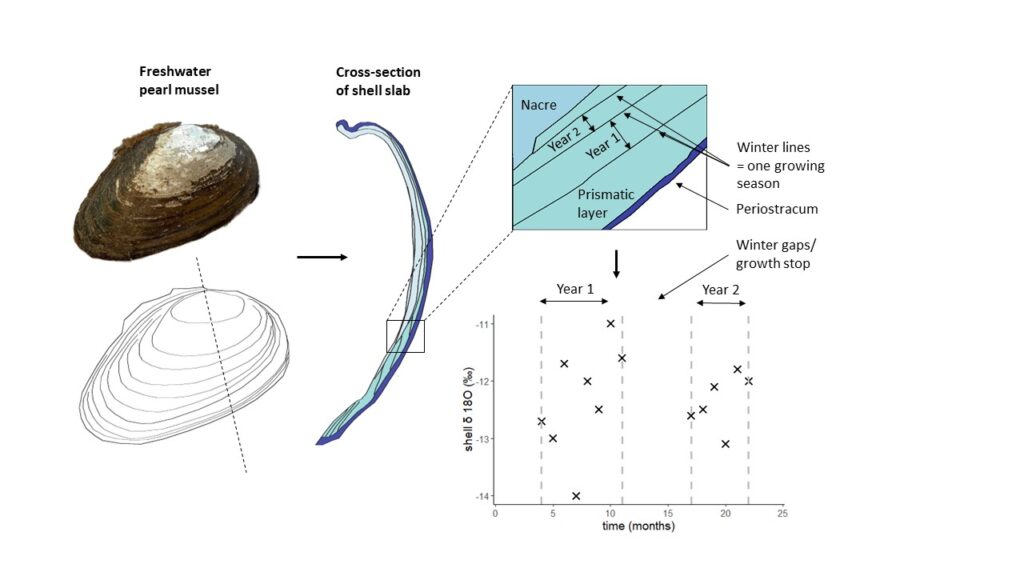
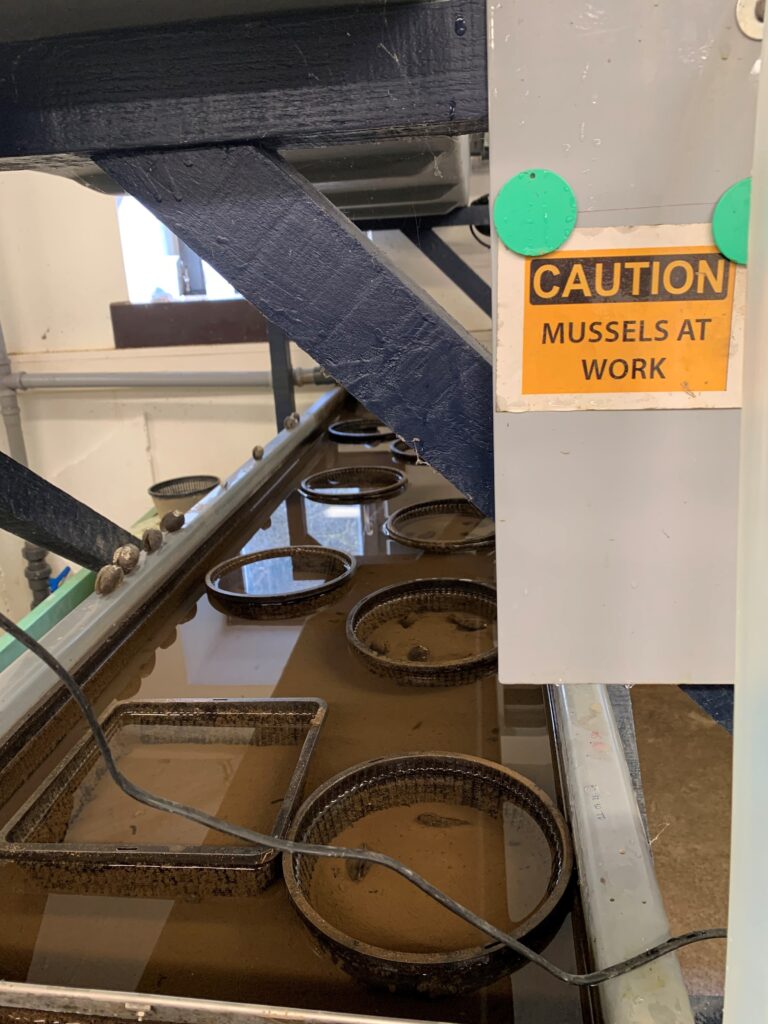
Goal to reconstruct over 50 years of water flow history
The team’s research aims to go beyond the current understanding of catchment climate resilience by reconstructing long-term (over 50 years) time series of O and H stable isotope signatures in precipitation and stream water as a proxy for river basin functioning.
“More specifically, we intend to reconstruct the O-H isotopic signal in precipitation using historic atmospheric circulation data and freshwater bivalve shells as natural archives of the history of flowing waters. Our long-term goal is to identify signatures and processes in watershed functioning by extending at unprecedented temporal resolution multiple natural, anthropogenic, and instrumental climate and hydrologic archives from today back to pre-instrumental times. ”Guilhem Türk Hydrologist & PhD researcher at LIST
Large datasets over long periods essential
Data is key in science, and this is no different in the field of hydrology where the temporal resolution and the spatial coverage are important. To answer questions on climate sensitivity, and the probability of floods or droughts, large datasets over long periods are essential, which represents a significant amount of work, time, and money, especially when contracting external firms.
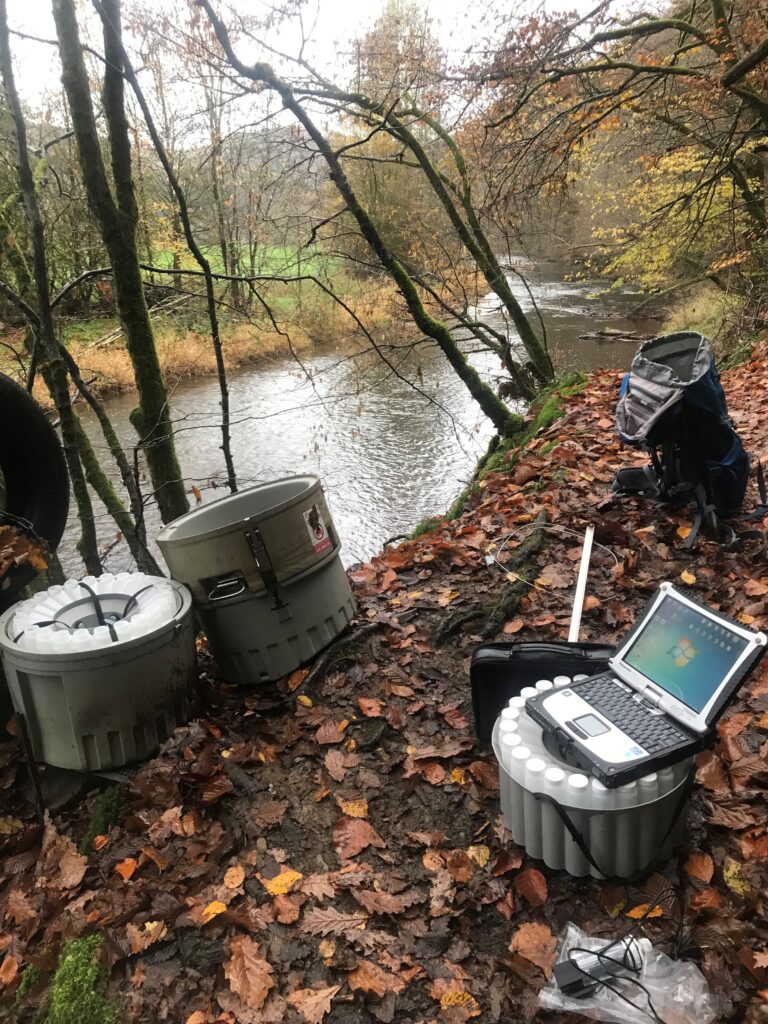
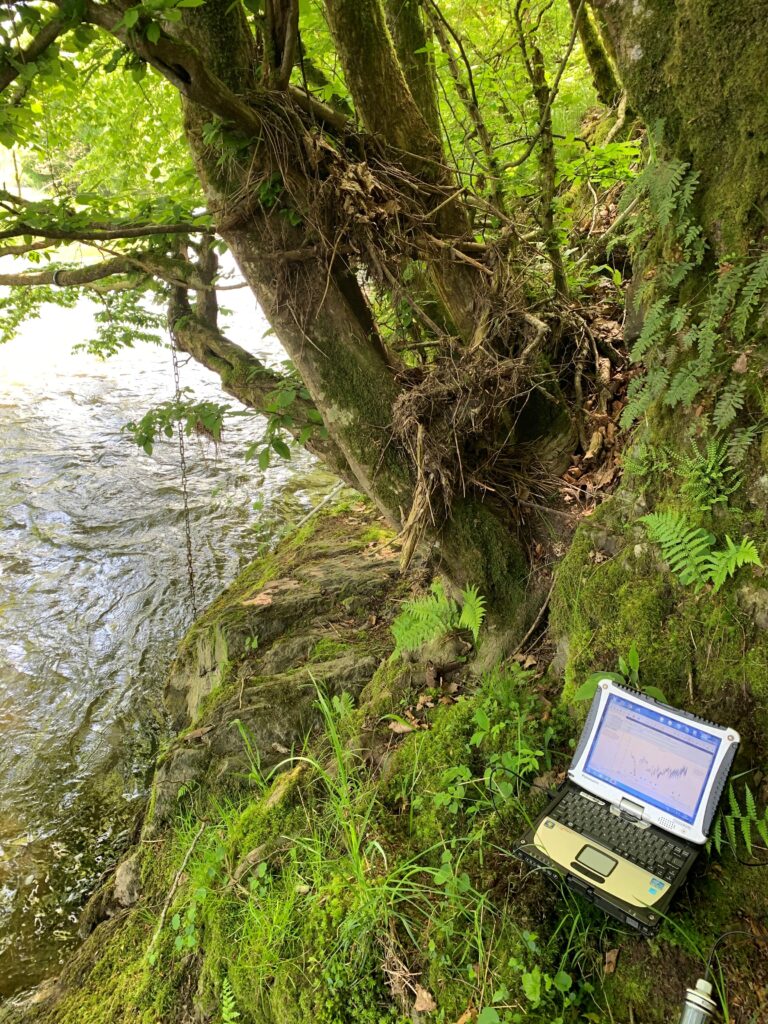
“At LIST, we have the means to perform isotopic analyses ourselves. My experience in the field allows answering these fundamental questions that we ask in hydrology by efficiently providing large amounts of data, while making sure that the quality is guaranteed,” explains Loic Léonard, a laboratory analysist in the team, who’s main activity is preparing the water samples and performing both the chemical and isotopic analysis.
Guilhem Türk and Loic Léonard work in the Catchment & Eco-hydrology group (CAT) at the Luxembourg Institute of Science & Technology (LIST), led by Richard Keim.
More about Léonard Loic, technician & laboratory analyst
What drives you in your work?
“Previously, I was working for the industry sector (cosmetics), and thus, taking this position at LIST two years ago was a new experience for me. It had me realise that the impact of climate change is becoming increasingly important, and I feel ever more concerned now. Contributing to the efforts to limit these impacts is very important to me and I want to continue producing the necessary data for it.”
What do you love about science?
“Science is about uncovering things we previously did not understand and thus securing our future. Working on projects from different areas, I get to learn a lot and that is what I love about science.”
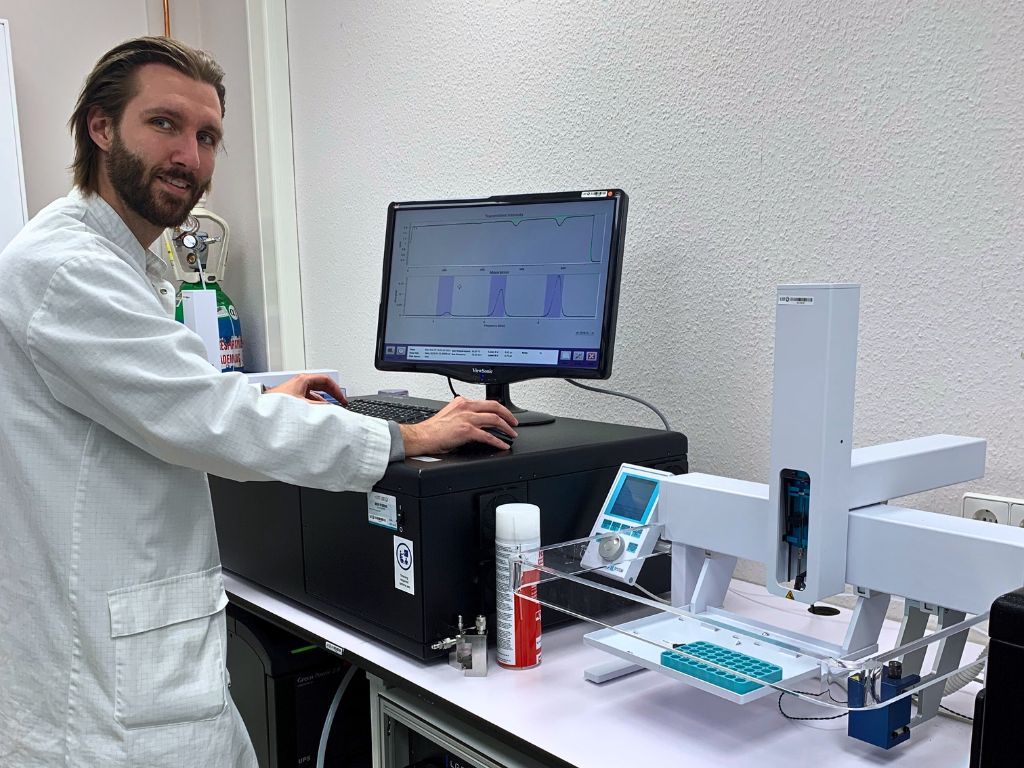
More about Guilhem Türk, Hydrologist, PhD candidate
What drives you as a scientist?
“Our environment supplies us with life, yet we understand little about it, or we would preserve it more. Sometimes I feel this disconnection, and I like to believe that working in environmental sciences brings me back to the essential, while raising awareness. Besides, there is something deeply honest about doing science, following a natural curiosity and a drive for knowledge and sticking to the facts. Also, as a scientist, I want to contribute to a necessary change, but I can see myself anywhere I can have an impact.”
What do you love about science?
“What I truly love about science is the scientific community. Scientists are curiosity-driven people always eager to debate over things and propose new perspectives. This leads to enrichment discussions, encouraging the scientific exchange, but also to nice human encounters. Many colleagues became friends and it is this open-mindedness that I love about what I do. Plus, you get to know people from all over the world doing science, yet another personal enrichment.”
“Hydrological tracers are key for understanding water and element flow paths and the history of flowing waters. Ever since pioneering work in the 1970s and 80s, time series of precipitation and stream water d18O and d2H composition are now a cardinal tool for quantifying catchment transit times, mainly via convolution techniques, age selection functions, or young water fractions of streamflow. While tracer research has shed new light on water and element fluxes in terrestrial ecosystems, our comprehension of tracer variability over decades and centuries remains very limited. This, in turn, has stymied progress on our understanding of long-term variability/changes in watershed co-evolution. High-resolution (seasonally to annually resolved) reconstructions of tracer chronologies extending into pre-instrumental times will be a game-changer in this respect – offering the prospect of assessing past variability and/or changes in eco-hydrological processes and watershed co-evolution. To fill this knowledge gap, we propose to leverage multiple natural archives, such as freshwater bivalve shells, or tree rings.”
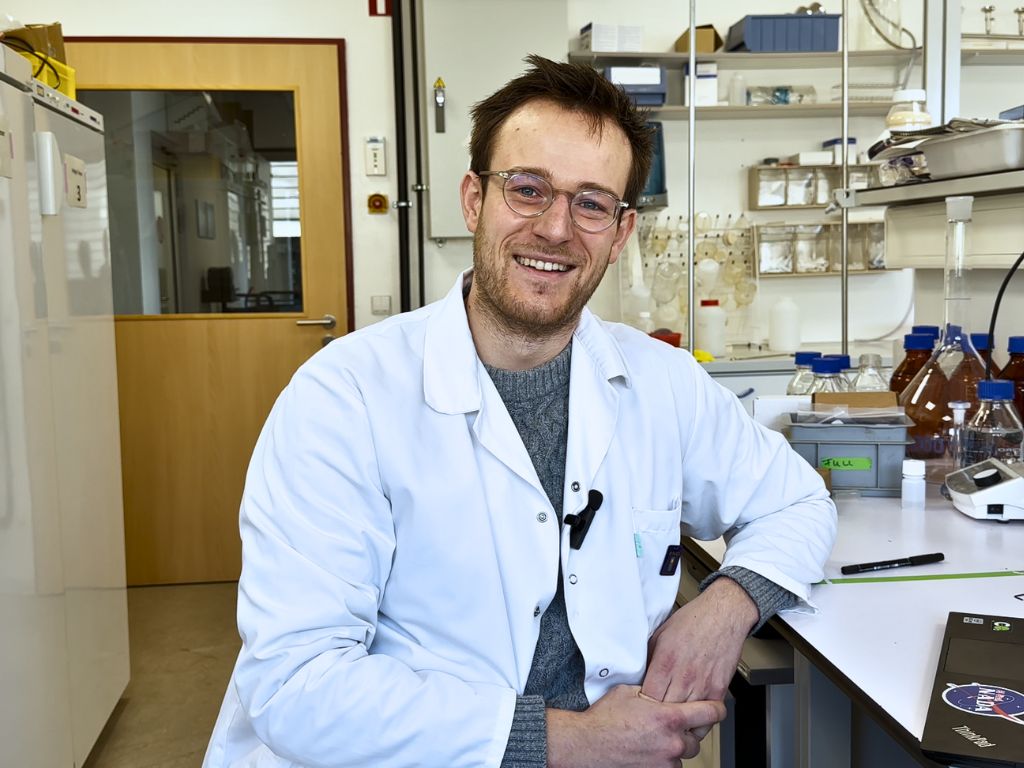
More about the research project MUSES
MUSES is an interdisciplinary project between LIST’s Catchment & eco-hydrology (CAT) group and the Department of Geosciences of the University of Mainz. Prof. Bernd Schöne (expert in palaeontology) and Christoph Gey (PhD candidate) at Uni. Mainz are focusing on the reconstruction of O-H stable isotopes in stream water from the freshwater bivalve shells. The oxygen isotope signature inside the minerals of the shell’s growth bands mirrors the seasonal and interannual variability of O isotopes measured in stream water – a feature paving the way for reconstructing revealing the hydrological systems’ past response to climate variability into pre-instrumental times. To complement the traditional shell micro-milling sampling techniques used at Uni. Mainz, LIST’s Materials Research and Technology department – under the supervision of Dr. Nathalie Valle – is exploring the potential for the Nano-SIMS (Secondary Ion Mass Spectrometry) technology for achieving previously unattained temporal resolution in reconstructed shell oxygen isotope signatures. Dr. Frankie Thielen (lead of the freshwater growth station at the Kalborn mill, fondation natur&ëmwelt) is supervising a series of tank experiments, where freshwater pearl mussel juveniles are grown under controlled conditions of water temperature and isotope signatures for assessing potential controls of environmental conditions on stream water isotope assimilation in bivalve shells.
Related highlights
Spotlight on Young Researchers: Advancing ecosystem monitoring with remote sensing and innovative models
The health of terrestrial ecosystems is intricately linked to the sustainability and stability of society: forests, grasslands, and cropland, play…
Read more
Spotlight on Young Researchers: Unravelling the role of calcium signalling to overcome melanoma drug resistance
Cutaneous melanoma is the most serious type of skin cancer and the sixth most frequent cancer in Europe. Despite progress…
Read more
Spotlight on Young Researchers: Advancing sustainable land use
Industry, agriculture and waste disposal all cause soil pollution, a threat to both ecosystems and human health. Environmental scientists and…
Read more
Spotlight on Young Researchers: Toward greener AI
Deep learning has seen an explosive growth and as it is now being relied upon in areas such as healthcare,…
Read more
Spotlight on Young Researchers: Combining machine learning & life events data to predict depression
A high number of people experience experiences depression in older age. Factors such as childhood conditions, adult life trajectories, and…
Read more
Spotlight on Young Researchers: Probiotics to the rescue
Billions of living microorganisms live in the human gut microbiome. Research has shown that an imbalanced microbiome plays a role…
Read more